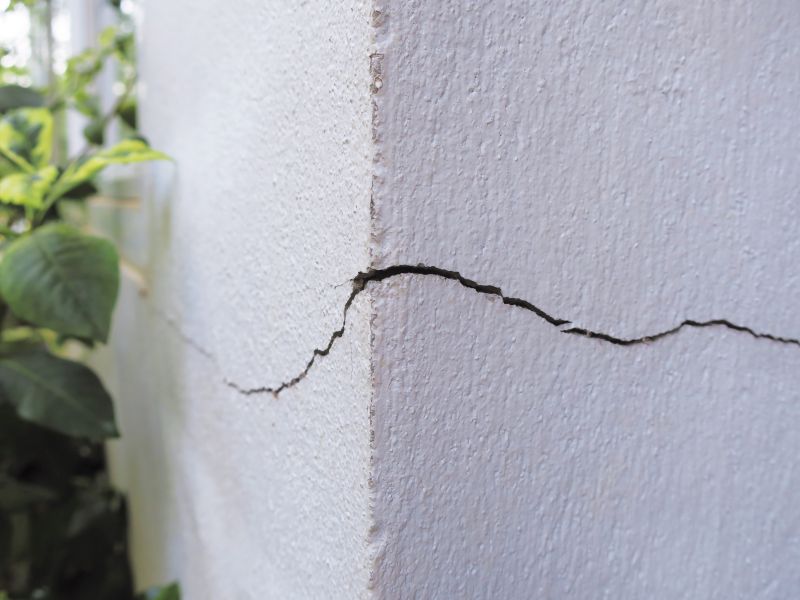
Denver’s winter brings more than just chilly temperatures and beautiful snow. At Strouse Home Inspection, we’ve seen how winter can also cause significant structural issues in homes. Cold weather can lead to problems like cracks in walls, frozen pipes, and roof damage. Recognizing these signs early can help prevent costly repairs and ensure your home remains safe throughout the winter. While we’re always here to provide a thorough inspection, here are some tips to help you spot issues on your own.
Cracks in Walls and Foundation
One of the most common signs of cold-related structural damage is the appearance of cracks in walls and the foundation. Freezing temperatures cause materials like concrete and drywall to contract, which can lead to:
- Visible cracks in walls, floors, or ceilings, especially around windows and doors.
- Gaps between walls and floors, indicating shifting due to frost heaving.
- Uneven floors, which could signal foundation movement caused by soil expansion and contraction.
What to do: Regularly inspect your basement or crawl space for cracks and consult Strouse Home Inspection if you notice widening or deepening gaps.
Drafts and Insulation Gaps
Cold drafts in your home may indicate insulation problems that could lead to structural issues over time. Poor insulation allows cold air to penetrate the structure, causing:
- Gaps around windows and doors, leading to energy inefficiency.
- Cold spots on walls, signaling insulation deterioration.
- Higher energy bills, as your heating system works harder to compensate for heat loss.
What to do: Inspect insulation in attics and walls, and seal any visible gaps with weather stripping or caulking.
Roof Damage and Ice Dams
Winter weather can take a toll on your roof, leading to leaks, sagging, or even collapse. Ice dams, caused by melting snow refreezing at the roof’s edge, can prevent proper drainage and cause:
- Water stains on ceilings and walls, indicating roof leaks.
- Icicles hanging from gutters, which may suggest ice dam formation.
- Sagging roof sections, which can indicate excess weight from snow accumulation.
What to do: Regularly clear gutters and downspouts to prevent ice dams, and call us to inspect your roof for damage after heavy snowfall.
Frozen or Burst Pipes
Cold weather can cause water inside pipes to freeze, expanding and potentially bursting the pipes. Signs of pipe issues include:
- No water flow or low water pressure, indicating frozen pipes.
- Unusual banging or clanking noises, which could mean ice blockages.
- Visible leaks or water stains, especially in unheated areas like basements and crawl spaces.
What to do: Insulate exposed pipes and allow faucets to drip during extreme cold to prevent freezing.
Window and Door Frame Shifts
Extreme temperature changes can cause materials around windows and doors to expand and contract, leading to:
- Difficulties opening or closing windows and doors, due to frame warping.
- Visible gaps allowing cold air inside, leading to heat loss.
- Condensation between window panes, which can indicate seal failure.
What to do: Check for gaps and reseal with caulking or weather stripping as needed.
Exterior Brick and Mortar Damage
Cold weather can weaken exterior brick and mortar, leading to deterioration known as freeze-thaw damage. Look out for:
- Crumbling or flaking brick surfaces, known as spalling.
- Gaps in mortar joints, which can allow water infiltration.
- Leaning or bowing walls, which could be a sign of deeper structural concerns.
What to do: Inspect brickwork annually and apply sealants to prevent moisture penetration.
Warped or Cracked Flooring
Wood and laminate flooring can expand and contract with temperature fluctuations, leading to:
- Gaps between floorboards, which indicate shrinkage due to dry winter air.
- Buckling or warping, caused by excess moisture from snow and ice tracked indoors.
- Creaking or uneven surfaces, a sign of underlying structural movement.
What to do: Use a humidifier to maintain indoor humidity levels and wipe up any moisture spills promptly.
Condensation and Mold Growth
Cold weather can lead to condensation buildup, particularly in poorly ventilated areas. Excess moisture can cause:
- Water droplets on windows and walls, leading to mold growth.
- Musty odors, signaling hidden mold or mildew.
- Peeling paint or wallpaper, due to trapped moisture.
What to do: Improve ventilation in bathrooms, kitchens, and basements to reduce moisture accumulation.
Protect Your Home from Cold Weather Damage
Being proactive about identifying cold-related structural issues can save you from costly repairs down the road. Regular inspections, proper insulation, and timely maintenance will help keep your home warm, safe, and structurally sound throughout the winter months. If you are ever in doubt or feel like you need a professional opinion, give Strouse Home Inspection a call, and we’ll be happy to help!
By Strouse Home Inspections Staff 1-1-2025